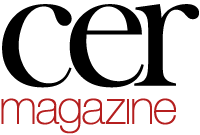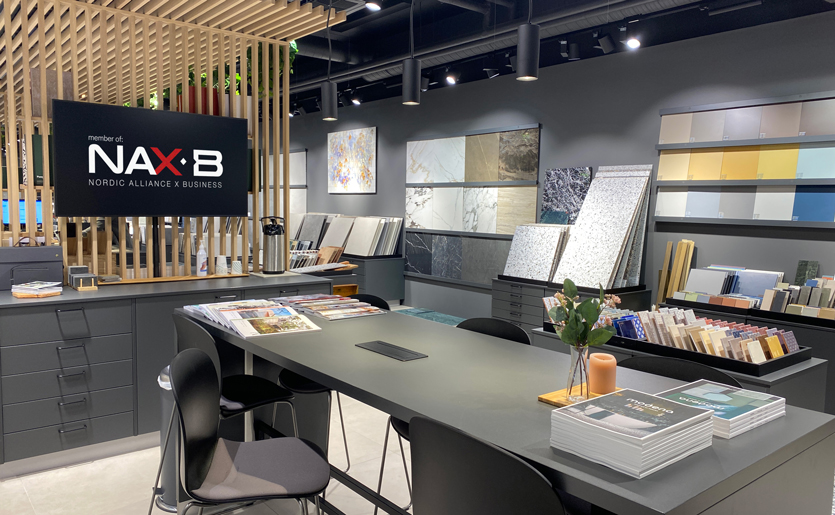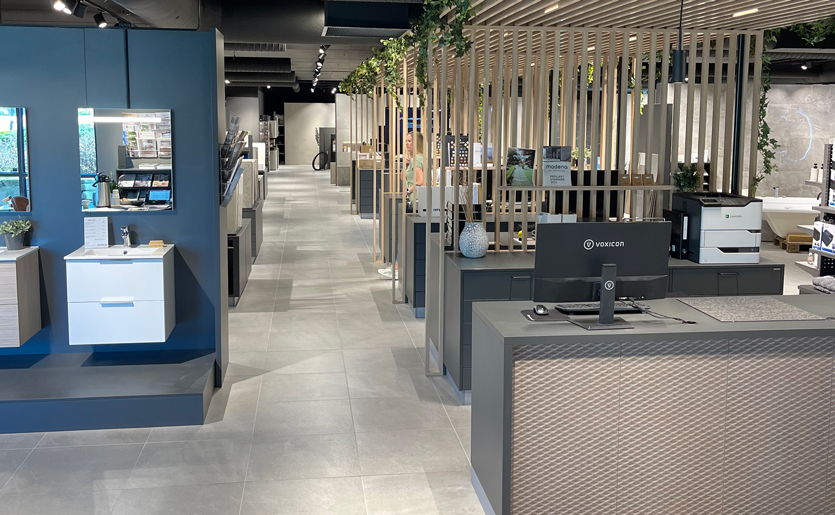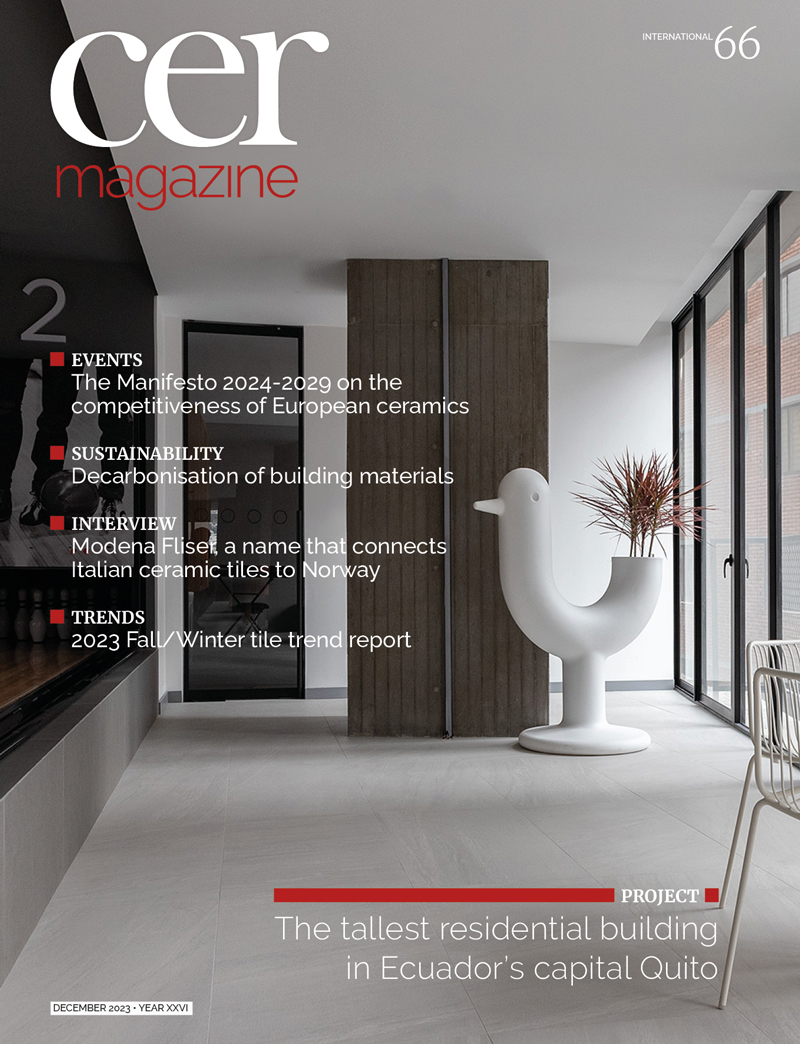The name that connects Italian ceramic tiles to Norway
 The Latin phrase “Nomina sunt substantia rerum” emphasises the significance of names as the essence of things. If your identity and business essence embody a profound passion for Italy or, better still, Italian ceramics, then the only fitting name would be Modena. In this interview, we introduce a leading Norwegian ceramic tile distributor called Modena Fliser (“fliser” means tiles in Norwegian). Established in 1986 as an independent company with a showroom located in Kristiansand in southern Norway, the company embarked on a journey marked by collaboration with other Norwegian importers and a series of acquisitions amounting to NOK 120 million. By 2005/2006, it evolved into Modena Gruppen, marking a significant transformation. In 2022, the group consolidated all its operating companies into a single entity known as Modena Fliser, with Modena Gruppen as the parent company overseeing administration, procurement and the central warehouse, while Modena Fliser focuses on market operations.
The Latin phrase “Nomina sunt substantia rerum” emphasises the significance of names as the essence of things. If your identity and business essence embody a profound passion for Italy or, better still, Italian ceramics, then the only fitting name would be Modena. In this interview, we introduce a leading Norwegian ceramic tile distributor called Modena Fliser (“fliser” means tiles in Norwegian). Established in 1986 as an independent company with a showroom located in Kristiansand in southern Norway, the company embarked on a journey marked by collaboration with other Norwegian importers and a series of acquisitions amounting to NOK 120 million. By 2005/2006, it evolved into Modena Gruppen, marking a significant transformation. In 2022, the group consolidated all its operating companies into a single entity known as Modena Fliser, with Modena Gruppen as the parent company overseeing administration, procurement and the central warehouse, while Modena Fliser focuses on market operations.
We discussed Modena Fliser with the CEO of Modena Gruppen, Tommy Ivesdal.
Mr Ivesdal, what was your 2022 turnover and how many showrooms do you have?
In 2022 our turnover was 528 million NOK (around €45 million). Today Modena Gruppen has 17 fully-owned and one partly-owned showroom operated by Modena Fliser. In addition, we have seven retail showrooms, including the first store in Narvik in the North of Norway which we opened in 2023.
Who are your main customers?
Our most important customers are bricklayers and tilers, whom we can satisfy with our wide range of products. Tilers in Norway also work as bricklayers, covering the entire brick and tile segment.
In addition, we do a lot of business with contractors and architects, and also make some sales to the private market.
Why do you work mainly with Italian producers?
Italy has been a major source of tile imports to Norway for several decades. In recent years, Italian-made products have represented some 45-50% of total ceramic tile imports. Modena Fliser aims to be a leading market player by delivering new technology and trendsetting products, all of which are provided by Italian producers. The Norwegian market identifies Italy with trends and state-of-the-art production, technology and quality. In addition, we are dependent on availability with short lead times and efficient logistic solutions. In our opinion, Italian producers also offer a very high level of customer care and after sales service. All these factors play an important role in achieving success in the Norwegian market.
What do you look for and what do your customers find in Italian products?
We always look for inspiration, new technology and developments, as well as products that represent what we believe could be the new trends. These trends could be graphic design, colours and/or sizes. To be able to supply products to the new generation of customers who are more focused on trends and sustainability, we often select products from Italy. In addition to sustainability, the professional market demands quality and availability, aspects that are typical of Italian-made products. Italian products tick all of these boxes, making them a natural choice for us.
What are the main characteristics of the distribution system in Norway, in particular in the ceramic sector, and what are the biggest problems you are facing?
The Norwegian tile sector primarily consists of 5-6 large chains that manage and control their own imports and also their nationwide distribution networks. On a European scale, the market is quite small, concentrated around the largest towns and cities. The biggest challenges we have been facing in the last 2-3 years are increased costs in terms of both labour and purchasing prices. For instance, in 2021/2022 we experienced several increases in most purchasing prices. It has proved extremely difficult to pass these higher costs on to the market. Adding to the cost problem is the fact that the Norwegian currency has lost a lot of value against the euro over the past ten months.
What is the situation in the real estate market in Norway?
Building activity has declined a lot in the last two years and is expected to drop even further in 2024. This contraction is particularly significant in the private house and apartment segment. The situation in commercial building activity is slightly better. The market for renovation is still OK, as historically this market segment has increased in both good and bad times. Overall some parts of the market are performing better than others, but in general the drop is significant.
Given the trends in the real estate market, what are your forecasts for the future development of your market sector and also for the ceramic sector?
Our forecast is for a further decline in 2024 before a market recovery begins in the autumn of 2024 and 2025. There is quite a significant housing deficit, and the market needs to respond to this demand. In parallel with the decreased building activity, the ceramic sector has also declined. We expect the ceramic market to resume growth in 2025/2026, but more effort needs to be devoted to competing against products such as wooden flooring.
What impact has the international situation (war, rising commodity and energy prices) had on your country’s economy and your market in particular, and what are your expectations for the future development of your market?
Just like most of Europe, Norway has been badly affected by the war and the increase in energy prices, inflation and interest rates. Although the Norwegian economy is very strong, the government has to cut spending in order to keep inflation in check. We are facing the same challenges as much of Scandinavia and the rest of Europe. I think the most important thing now is to get inflation under control and stabilise interest rates. Generally, the market is reluctant to invest without knowing what the economic future will look like. Sustainability will play an increasingly important role in our business. The Scandinavian market is in many ways the leader in this field, but there is still a long way to go. The ceramic industry must devote even more effort to ceramic quality certification, in particular through product EPDs.
December 2023







